by Winding Pathways | Jul 6, 2023 | Nature, Trees, Trees/Shrubs
Just what impact did the heavy wildfire smoke that blanketed vast regions of Canada and the United States have on plants? We wondered. The news media warned of smoke’s impact on people and pets and cautioned us to stay indoors and limit physical activity. But what about plants?
For many June days smoke from Canadian fires settled over Winding Pathways and a vast area of North America. With the Western United States likely to ignite later in the summer, it’s time for Smokey Bear to get ready for more action these growing-season days.
-
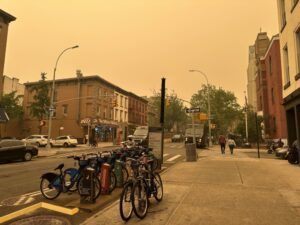
-
Air quality is compromised by smoke. Photo credit NP
Impact on Photovoltaics
We watched the real-time production monitor on our photovoltaic system during smokey days. It indicated that smoke was reducing our collector’s ability to turn solar energy into electricity. Was something similar happening with crops, trees, and lawns?
We turned to wildfire and smoke experts at our alma mater, the University of Idaho’s College of Natural Resources, for answers.
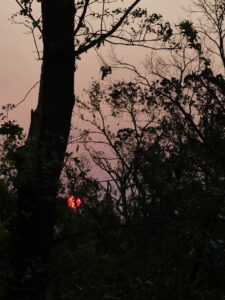
Smokes filters light.
Dr. Charles Goebel, Professor of Forest Ecosystem Restoration, explained, “Yes, smoke can impede photosynthesis. There is some research that indicates that short-term smoke exposure can reduce photosynthesis by as much as 50%. This is, in part, due to the reduced light intensity, destruction of chlorophyll, and reducing the flow of carbon dioxide through stomata.” He added that lower levels of smoke can help plants by increasing the carbon dioxide level and diffusing the light that some plants use better than direct sunlight.
How Plants React to Smoke
Dr. Goebel added fascinating aspects about plants and smoke. “Plants can filter out some smoke particles but probably not enough to make much difference during heavy smoke events. Smoke particles that settle to the ground may have some beneficial impact on plants. Smoke contains calcium, magnesium, and potassium, which are essential plant nutrients,” he added.
Wait…There Is More!
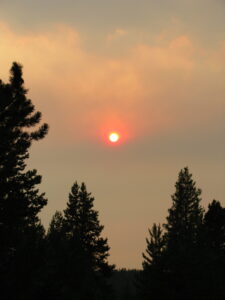
Wildfires are common in the West.
Dr. Lena N. Kobziar, Associate Professor of Wildland Fire Science, added: “We know that fires emit microbes (fungi, bacteria, archaea) along with other gaseous and particulate matter. Smoke transmits these living microbes that can colonize damaged soil and begin to grow and multiply. This can help the soil,” she said.
Want to learn more? Dr. Kobziar’s Fire Ecology Lab website has an enormous amount of current information on wildfires and their impact on forests and people.
The University of Idaho
We’re Vandals……meaning graduates of the University of Idaho. Our immediate family earned four degrees there. We’ve joke that the “real” U of I is not in Iowa City but in Moscow, Idaho. The Vandals are its mascot.
We enjoyed our academic careers at the U of I. Knowledge gained there helped our lives and careers and we humbly thank its faculty for continuing to answer our nature-related questions, like about smoke, years after graduation.
It’s a great institution. Take a look at the University of Idaho’s website. Go, Vandals!
by Winding Pathways | Feb 2, 2023 | Foraging, Nature, Pests, Trees, Trees/Shrubs
Disappearing Ash Trees
Ash trees are fast disappearing from American forests and towns. It’s tragic.
There are several ash species, including white, green, blue, and black. A Chinese native insect, the Emerald Ash Borer, is killing them all quickly. It’s awful.
Years ago, Dutch Elm Disease cleared cities of American elms, and many homeowners and towns planted green and white ash trees to replace them. Ashes, in general, thrive in the woods and towns. They grow relatively quickly, resist storm damage, and are beautiful. They seemed like an ideal urban tree.
That was true until Emerald Ash Borers were found in Michigan in 2002, although they may have been around at least a decade earlier. Since then, the insect has spread like crazy, killing ashes radiating outward from Michigan.
They reached Iowa years later and have since killed most of the trees in Cedar Rapids, area woodlands, and many other towns.
Salvaging Ash trees
Rich salvages wood from a scrap pile of used pallets. Pallets are made from cheap wood, like cottonwood, poplar, and hackberry, but now he’s finding ones made of ash.
Loggers are salvaging dead and dying ash trees, and the wood is cheap, at least for now. Soon ash lumber will no longer exist.
A Versatile Wood
Sports fans will miss ash wood. It makes the best baseball bats and has been used for gymnastic bars.
Ash also is crafted into gorgeous furniture.
We lost our big ash tree in the August 2020 derecho, but it was already infested with borers with its days numbered. Sadly, we cut the tree up but gave it a second task. It harvested solar energy and used it to make wood. That wood is now being fed, piece by piece, into our woodstove. It’s keeping our home warm, but we’d rather have our tree.
-
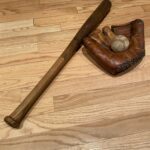
-
Ash bat on oak floor.
-
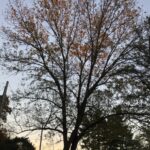
-
The ash tree anchored our east corner of the property.
-

-
White Ash bats will soon be a memory as these elegant trees die.
by Winding Pathways | Jan 12, 2023 | Nature, Trees
Winter trees. We love ‘em even though they don’t sport their cooling green summer leaves or October’s color.
When autumn leaves fall, trees look wonderfully different. Their nakedness reveals sights that are difficult to notice during summer. Here are some of the delights we discover when walking through January woodlands and looking at the winter trees.
Pods, Seeds, Textures
Pods and Seeds: Just what are those long string bean-looking pods hanging from the branches? They are the seed pods of the catalpa tree. Nearby are flattish, twisted, crinkled black pods upwards of six inches long. Some are still hanging from branches, while others litter the path. They’re honey locust pods. Pry one open to find large black seeds inside. Box elders have typical maple helicopter seeds that stay on the trees much of the winter unless devoured by hungry squirrels or cardinals. Sycamore trees hold their round ball seeds on the ends of branches well into winter.
Twig Texture: Elms and sugar maples sport zillions of finely textured twigs toward their tops, while walnuts, box elders, catalpas, and ailanthus have far fewer but much thicker twigs. Ash trees are somewhat in between, but their twigs radiate out at nearly right angles from branches.
-
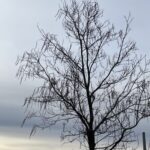
-
Catalpa pods hang on through the winter.
-
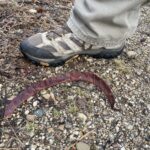
-
Pod next to size 12 foot.
-
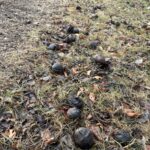
-
When you see walnuts look up and note the structure of the tree.
-
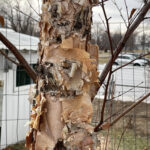
-
River Birch bark curls.
Bark and Shape
Bark: Young maples, ailanthus, and Siberian elms have smooth bark that becomes darker and more textured as the tree grows. The most intriguing bark pattern is always on hackberry trees. The bumpy bark makes it unmistakable.
Shape: The profile of leafless trees often is a clue to the species. Pin oaks have a central trunk with lower branches that sometimes slope downward or radiate out at nearly right angles. The tree is spruce shaped in great contrast to wide-spreading white and bur oaks. Box elders always seem to be leaning one way or another, while American elms often show a thick buttress close to the ground beneath a vase-shaped upper. Siberian elms shoot straight for the sky.
-
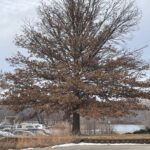
-
Pin oaks hold leaves.
-
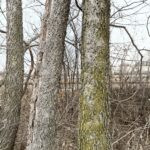
-
The knobby bark of the Hackberry reminds us of fat tires!
-
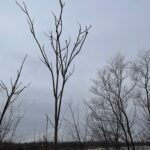
-
Ailanthus coarse twigs and finer twigging of Siberian Elm
Color
Color: Although winter tree bark is mostly gray to black sometimes color comes through. Spot a subtle orange bark and it’s likely a mulberry tree. Large Scotch pines also have pumpkin-colored bark towards the top. Sycamores are distinctive in their pale, flakey bark. And, white birches are easy to identify with their smoother, white bark that tends to curl as the trees age. Their cousin, the river birch, has shaggier bark and often grows larger in damp soil.
Winter trees are always fun to see and often are easy to identify. As we walk through the snow, we love discovering many tree shapes, textures, seeds, and bark. to help identify Google something like shape of (name of tree) in winter. The images will help you identify the trees before you go for a walk.
by Winding Pathways | Jun 9, 2022 | Nature, Trees
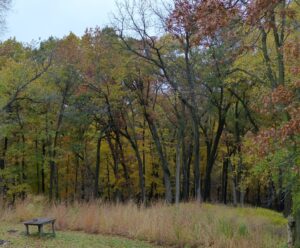
Harvesting Iowa Wood is sustainable.
When we tell people that Iowa is a major producer of some of the world’s most beautiful hardwood, they think we’re nuts. After all, we live in the corn state, where it’s possible to drive a hundred miles viewing only crops.
“Iowa is the sweet spot for the highest quality walnut lumber. Further north it’s too cold for the trees to get big enough and down south they grow so fast the logs contain much white sapwood and wide growth rings. Local walnut is of the highest quality, and it’s beautiful and abundant,” said Thomas Hunt as he led us through the Kendrick Forest Products Mill in Edgewood, Iowa.
Black walnut has been a favored hardwood for paneling, cabinetry, furniture, and gunstocks for hundreds of years. Its dark heartwood has a complex grain pattern that glistens with beauty. It is easy to work with, holds finish well, and is used to create furniture prized for generations.
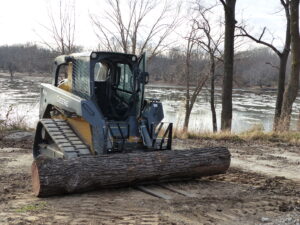
Log ready to be loaded.
Walnut trees are abundant in Iowa, especially in the tightly wooded valleys of the Driftless Area. Trees grow relatively quickly and produce annual nut crops that squirrels bury by the thousands each fall. They only find some for winter snacks. The rest sprout into new trees. When carefully logged walnuts, along with oaks, hickories, ashes, and basswoods produce crops at long intervals and just as sustainably as well-managed farm crops.
Logs are shipped to Kendrick’s mill and sorted by species. During our visit, workers were transforming sugar maple logs into boards. No doubt some will end up flooring beautiful and resilient basketball courts.
Logs enter a huge machine that removes the bark and any dirt clinging to it. They then enter a powerful bandsaw. We watched Zippy operate hand and foot controls that fed each log into the blade that squared off a side. He then flipped it over and cut three more times to create a massive squared-off hunk of maple that next moved to another saw. It cuts the log into one of many things. Sometimes they make railroad ties. We watched the saw create inch-thick lumber.
Boards then go to the “green chain”, a room where workers sort them by grade and stack them up. From there they are cured in the open air and eventually in a kiln that removes moisture.
Finished products are shipped to customers far and wide. Walnut is especially valued overseas. Anyone who loves finely-crafted cabinetry, paneling, or flooring may have Iowa-grown wood processed at Kendrick Forest Products. Iowa’s more than a corn state!
Want to see the mill in action? Kendrick’s offers tours. Information is on their website at kfpiowa.com/take-a-tour/. Can’t get to Eldridge? Enjoy a video tour on their website. And, learn about Monday Mulch!
by Marion Patterson | May 12, 2022 | Birds, Garden/Yard, Nature, Trees
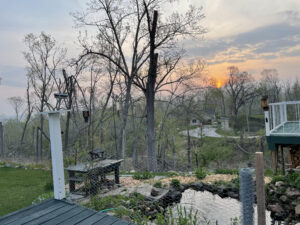 The distant view and the feel are “Hot August Days.” The near view and sounds are mid-May. With this hot weather, the trees have popped, the fruit trees are in full bloom, and the early garden plants emerging after the cooler and damp weather. We may break a century-old heat record today.
The distant view and the feel are “Hot August Days.” The near view and sounds are mid-May. With this hot weather, the trees have popped, the fruit trees are in full bloom, and the early garden plants emerging after the cooler and damp weather. We may break a century-old heat record today.
Two days ago we had the woodstove running. Now the air conditioner!
Notice the haze in the distance and the sun rising in the east – still six weeks from the Summer Solstice. Humidity levels are high. Winds are calmer after the front blew in.
The trees show emerging leaves and catkins. Insects work the fruit trees and low-growing spring flowers.
Birds are everywhere singing, courting, mating, and building nests. Amazing transformation in two days.
-
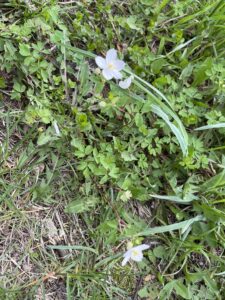
-
Deeply cut leaves of the false rue anemone.
-
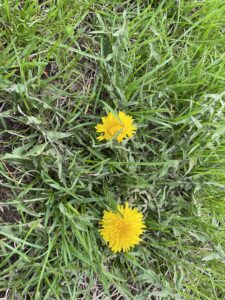
-
going at $8.00 per gallon at wineries, picking blooms from safe places is good income.
-

-
the oak popped out in one day with the heat.
-
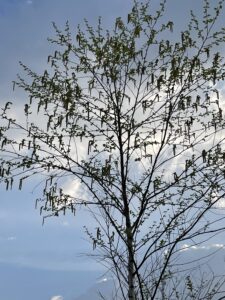
-
birds forage in emerging buds.
by Winding Pathways | Dec 2, 2021 | (Sub)Urban Homesteading, Foraging, Garden/Yard, Trees
On a windy cold Thanksgiving afternoon, we did something nutty. After tossing buckets and shovels into our pickup we drove north until we spotted greenish foliage popping through the road ditches dry grass.
There, we rescued six red cedar trees that are now at home in our yard.
A Hardy Tree
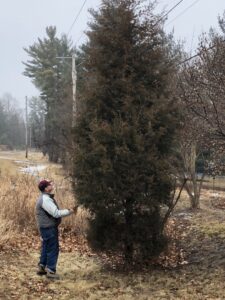 Few American trees have such a love-hate relationship with people as the red cedar, which is actually a Juniper. Perhaps it’s unpopular because of the plant’s amazing adaptability. Sure, it needs full sunlight but given that it thrives in heat, salty roadsides, and terrible soil it is one hardy plant! Even stiff grass competition that snuffs out other baby trees doesn’t seem to bother it.
Few American trees have such a love-hate relationship with people as the red cedar, which is actually a Juniper. Perhaps it’s unpopular because of the plant’s amazing adaptability. Sure, it needs full sunlight but given that it thrives in heat, salty roadsides, and terrible soil it is one hardy plant! Even stiff grass competition that snuffs out other baby trees doesn’t seem to bother it.
Red cedars thrive from the Great Plains eastward to the Atlantic Ocean. In many places they are small bushes, but sometimes the tree grows big enough to interest loggers. The aromatic wood is used to craft cedar chests, closet linings, and even pencils. Fence posts made of it last for decades.
Why Ranchers and Farmers Dislike Cedars
Ranchers curse cedars because they spread in pastures. Cattle don’t like dining on prickly cedar twigs, and within a decade or two cedars replace the grassy food that cows love with a green desert of scrubby trees.
What’s to Love About Red Cedars
But, a cedar grove isn’t really a desert. Birds, especially cedar waxwings, love eating their tiny blue berries, and dense stands of cedars protect many species of wildlife from howling wind, searing sun, and predators.
There’s more. We live in Cedar Rapids, a city named for the rugged trees that grow in rocky bluffs over the Red Cedar River. They’re small and twisted but some are over 400 years old.
We planted our cedars on the edge of our property where they will form a screen from the wind and passing car headlights. They also will give us privacy, and be a safe home for birds that visit our feeders.
In mid-December, we’ll return to the road ditch and cut a six-foot red cedar for our Christmas tree. Cedars are scraggly and unsymmetrical, but we don’t put our tree up in the house. It will grace the Holiday season on our back deck. Pouring a few cups of sunflower seeds in its foliage creates a living stream of ornaments as goldfinches, chickadees, cardinals, and nuthatches come and go.
For information on red cedars and many other trees visit the website of the National Arbor Day Foundation.
-
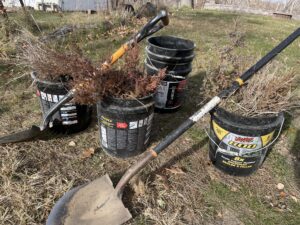
-
We rescued seedlings to plant for screens in our yard.
-
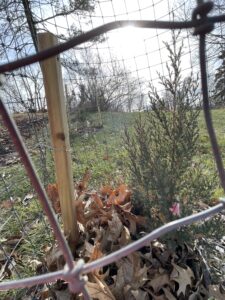
-
We remember to protect the seedlings.
















 The distant view and the feel are “Hot August Days.” The near view and sounds are mid-May. With this hot weather, the trees have popped, the fruit trees are in full bloom, and the early garden plants emerging after the cooler and damp weather. We may break a century-old heat record today.
The distant view and the feel are “Hot August Days.” The near view and sounds are mid-May. With this hot weather, the trees have popped, the fruit trees are in full bloom, and the early garden plants emerging after the cooler and damp weather. We may break a century-old heat record today.



 Few American trees have such a love-hate relationship with people as the red cedar, which is actually a Juniper. Perhaps it’s unpopular because of the plant’s amazing adaptability. Sure, it needs full sunlight but given that it thrives in heat, salty roadsides, and terrible soil it is one hardy plant! Even stiff grass competition that snuffs out other baby trees doesn’t seem to bother it.
Few American trees have such a love-hate relationship with people as the red cedar, which is actually a Juniper. Perhaps it’s unpopular because of the plant’s amazing adaptability. Sure, it needs full sunlight but given that it thrives in heat, salty roadsides, and terrible soil it is one hardy plant! Even stiff grass competition that snuffs out other baby trees doesn’t seem to bother it.
